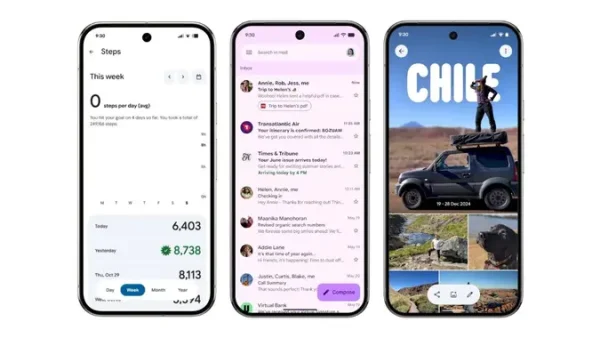On Tuesday, Google initiated a sequence of major announcements related to Android as part of its newly launched ‘The Android Show: I/O Edition’. Among the highlights is the debut of Material 3 Expressive, the next-generation open-source design language system for Android. According to the Mountain View-based tech giant, Material 3 Expressive focuses on deep personalization, giving users the power to customize their Android device in ways that feel unique and tailored to them. The new design language features updated dynamic color schemes, natural animations, subtle haptics, a new Live Updates feature, and more.
Material 3 Expressive: What’s New
Ahead of Google I/O 2025, scheduled for May 20–21, Google detailed Material 3 Expressive in a blog post. This new design language builds on the foundation of Material You, offering even more customization options and visual enhancements that blend modern aesthetics with improved functionality.
With Material 3 Expressive, Android users can now customize Quick Settings for faster access to commonly used actions such as Flashlight and Do Not Disturb. The newly introduced Live Updates feature gives users real-time, glanceable progress notifications across various apps, similar to Apple’s Live Activities. This includes updates for food delivery, rideshare services, navigation, and more.

Subtle UI Changes for a Seamless Experience
Google has introduced refined UI elements throughout Android. For instance, when dismissing a notification, adjacent ones will react fluidly. Users will also feel a haptic feedback “snap” when removing a notification from the stack. Similar interactive responses occur when adjusting the volume slider or screen brightness. The notification shade background is now subtly blurred to create depth, enhancing visual appeal.
As part of Android’s broader visual overhaul, Material 3 Expressive introduces:
- Refreshed dynamic color themes
- Responsive UI components
- Highlighted typography
These are aimed at delivering a more personalized and expressive interface that reflects the user’s individual style.
Also Read: Ray-Ban’s AI-equipped Meta Sunglasses Finally Hit India With A Huge Price Tag
Integration with Google Apps and Smartwatches
Google is extending Material 3 Expressive beyond the smartphone UI to integrate with key apps such as Fitbit, Gmail, and Google Photos. These updates aim to create a consistent, cohesive design experience across Google’s app ecosystem.
On Wear OS-powered smartwatches, Material 3 Expressive adapts to the circular display, with curved scrolling animations, redesigned pin pads, and media controls. The update also introduces shape-morphing transitions for better usability on smaller screens.
Dynamic color theming is making its way to Wear OS, allowing your watch face style to extend across the entire smartwatch interface. A new system of glanceable buttons, designed to wrap naturally around the screen, offers quick access to information and actions like messaging contacts or starting workouts while consuming minimal screen space.
Material 3 Expressive: Availability and Performance Boosts
These changes are expected to launch alongside Wear OS 6, which will also include performance upgrades and battery optimizations delivering up to a 10% improvement in battery life.
Google states that Pixel devices will be the first to receive Material 3 Expressive later this year with the release of Android 16. The company is also partnering with OEMs to roll out these design enhancements to other Android and Wear OS devices.



2 Comments
Pingback: Google Rolls Out Smarter AI Features for Android and Chrome
Pingback: Spotify DJ Now Takes Voice Commands for Custom Playlists